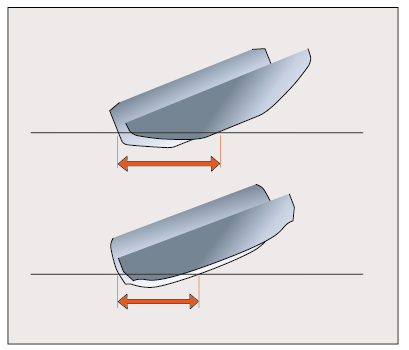75th SYDNEY-HOBART 2019
COMANCHE, THIRD WIN...
The victory went to the Maxi 100 Comanche, - Saturday 28th December 2019, at 7.30am, after a stressful final for the skippers and their crews, on the River Derwent, in a near nil wind ...

©F Chevalier
Alas, this 2019 edition will be remembered for the tragic spectacle of the wildfire nightmare that ravaged - the word is feeble - the Australian forest as the starting line in Sydney.

©F Chevalier
In any case, the winner Comanche completed the course - 628 miles - in one day, 18 hours, 30 minutes and 24 seconds, nearly 45 minutes ahead of its chaser, InfoTrack.

©F Chevalier
The record for the event, set by the same Comanche in 2017 and which was 1 day, 09 hours, 15 minutes, and 24 seconds, has therefore not been broken.

©F Chevalier
Winner of the event nine times, Wild Oats XI took third place, beating Scallywag by 38 split seconds in the fourth place....
The fifth Maxi 100 to cross the finish line will be Black Jack IV.
Yacht Specifications:
FIRST
Comanche
Maxi 100’
SECOND
Infotrack (ex-Perpetual Loyal, ex-Rambler 100, ex-Speedboat)
Maxi 100 pieds
THIRD
Wild Oats XI
Maxi 100’
FOURTH
Scallywag (ex-Maximus, Investec Loyal, Ragamuffin Loyal, Ragamuffin 100)
Maxi 100’
FIFTH
Black Jack IV (ex-Esimit Europa II, ex-Alfa Romeo II)
Maxi 100’




Comanche
Maxi 100’
Sloop
Designers: VPLP et Guillaume Verdier.
Builder: Hodgdon Yachts, Boothbay, Maine, USA
Launched: 27 September 2014
LOD: 30,48 m
LWA: 30,48 m
LWL: 30,25 m
Beam: 7,85 m
Draft: 6,67 m
Air Draft: 45,75 m
Bowsprit: 3,70 m
Displacement: 29,5 t
Main Sail Area: 410 m2
Sail Area (upwind): 760 m2
Sail Area (downwind): 1 400 m2
SECOND
Infotrack (ex-Perpetual Loyal, ex-Rambler 100, ex-Speedboat)
Maxi 100 pieds
Sloop
Designer: Juan Kouyoumdjian
Builder: Cookson Boat, Auckland (N-Z)
Launched: 17 April 2008
LOA: 30,48 m
LWL: 29,99 m
Beam: 7,35 m
Draft: 6,22 m
Air Draft:47 m
Bowsprit: 5 m
Displacement:30,6 t
Ballast: 8 t
Main Sail Area: 375 m2
Sail Area (upwind): 660 m2
Sail Area (downwind):: 1 340 m2
THIRD
Wild Oats XI
Maxi 100’
Sloop
Designer: Reichel/Pug
Builder: McConaghy, Sydney
Launched: 2nd December 2005
LOA: 30,48 m
LWL: 30,48 m
Beam: 5,10 m
Draft: 5,94 m
Air Draft: 44 m
Bowsprit: 4,15 m
Displacement: 31 t
Main Sail Area: 390 m2
Sail Area (upwind): 630 m2
Sail Area (downwind): 1 400 m2
FOURTH
Scallywag (ex-Maximus, Investec Loyal, Ragamuffin Loyal, Ragamuffin 100)
Maxi 100’
Sloop
Designer: Andrew Dovell
Builder: Cookson Boat, Auckland (N-Z)
Launched: February 2005 (Maximus)
LOA:30,48 m (ex 98’ Greg Elliot & Clay Oliver design)
LWL: 30,48 m
Beam: 5,80 m
Draft: 5,60 m
Air Draft: 45,10 m
Bowsprit: 4,40 m
Displacement:33 t
Main Sail Area: 395 m2
Sail Area (upwind): 630 m2
Sail Area (downwind): 1 400 m2
FIFTH
Black Jack IV (ex-Esimit Europa II, ex-Alfa Romeo II)
Maxi 100’
Sloop
Designers Reichel/Pug
Buuilder: McConaghy, Sydney
Launched: 2005
LOA: 30,48 m
LWL: 30,48 m
Beam: 5,19 m
Draft: 5,80 m
Air Draft: 44 m
Bowsprit: 4,25 m
Displacement: 34 t
Main Sail Area: 360 m2
Sail Area (upwind): 600 m2
Sail Area (downwind): 1 400 m2



































